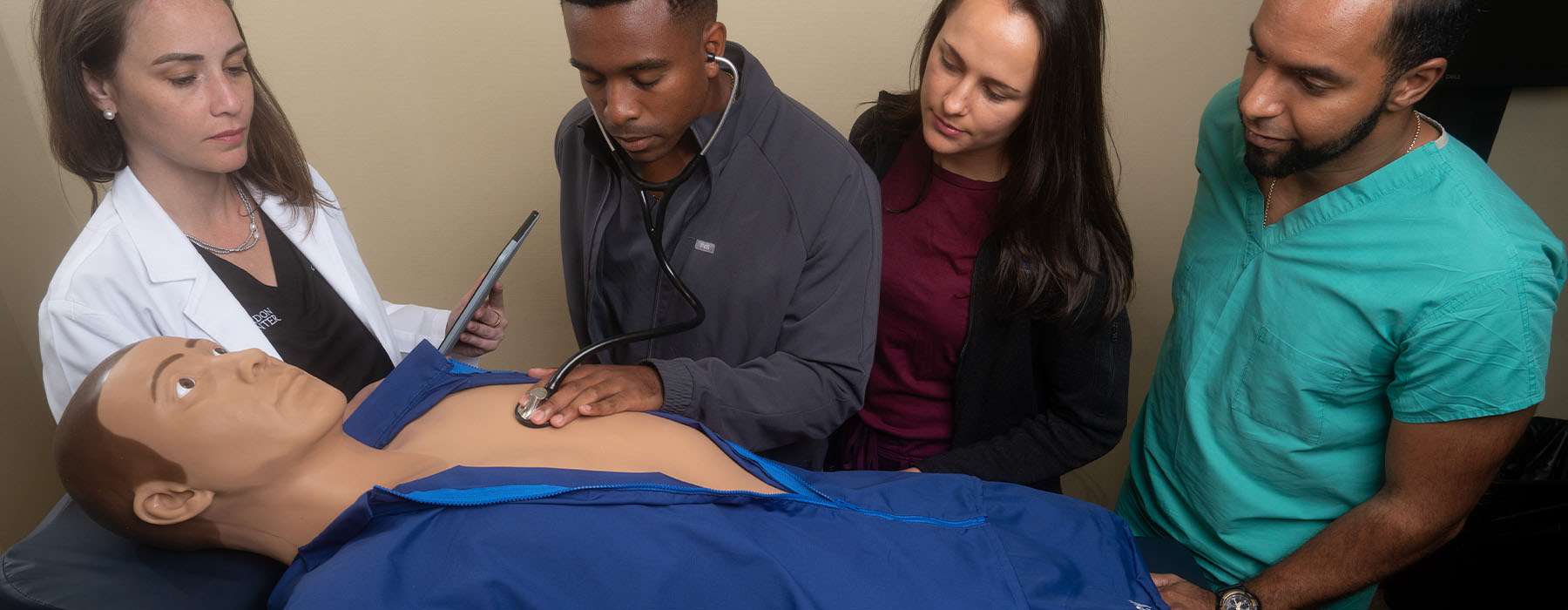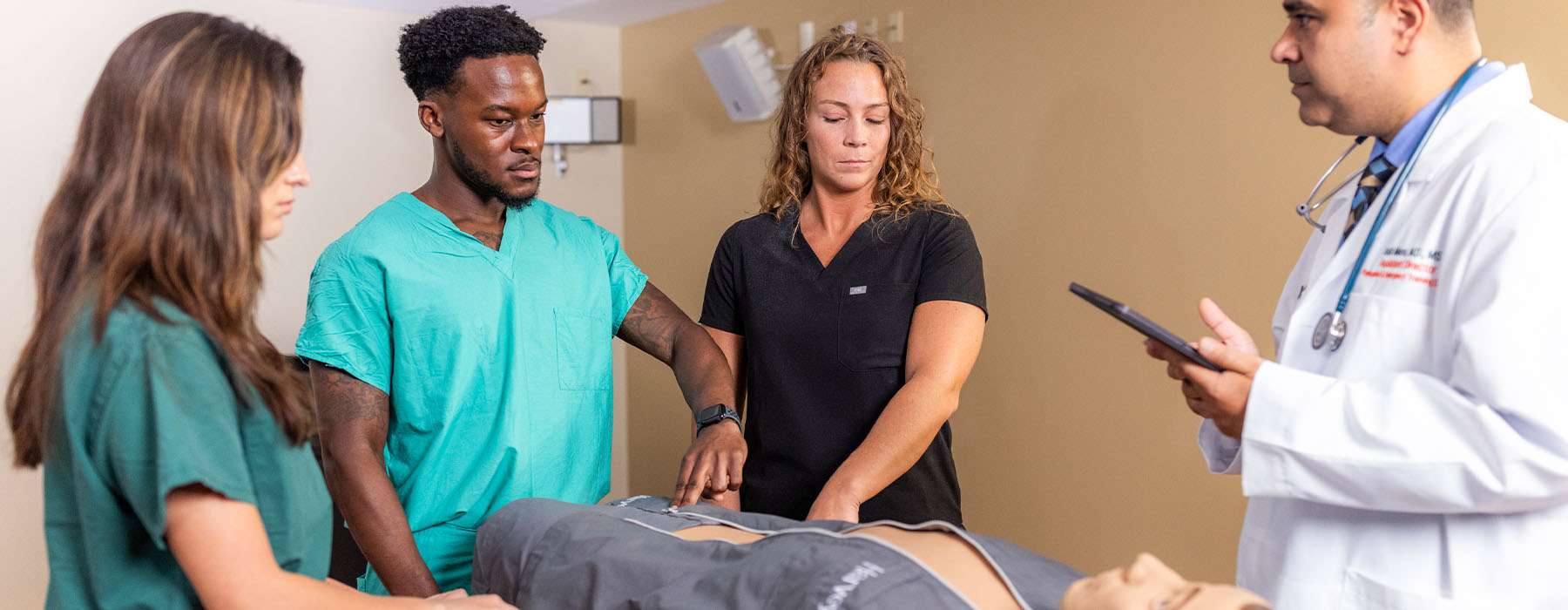A Renewed Focus on Competency-Based Medical Education
An Interview with Dr. Barry Issenberg
Professor of Medicine and Michael S. Gordon Chair of Medical Education


Watch the video or read the transcript below to get insights from Dr. Issenberg about the key role of simulation in competency-based medical education (CBME).
Dr. Issenberg: Competency-based education has been around since the late 1970s. And it’s been discussed and implemented on smaller scales over the past 40 years. But more recently, there’s much greater attention for competency-based education and what it means.
And there’s several reasons for that. There’s been recognition, up until now, that the real expectation for learners, whether they’re medical students or nursing students, is that they’re judged by how well they perform on knowledge- based tests, multiple choice examination. And while those are very important, if you recognize if you solely rely on those, when those learners are now practicing in the patient care environment, they’re not ready. Competency-education focuses on, what are the skills? How well can you apply knowledge in the patient care environment? And setting that as the expectation, rather than solely knowledge alone.
The other reason is it’s understood that people learn at different rates. In the past, all education was based on time. The time was set, and whether a learner could achieve a passing score or not. They only had the same amount of defined time to reach it. Competency-based education realizes that time can be variable. What should be set and standard is the high level of competence that is expected, and that the time may vary.
And that’s why it may seem intuitive, that why wouldn’t we design our education that way? But it’s been the traditional model for over 100 years – all time-based as opposed to competency-based.

Dr. Issenberg: The current state of adoption and integration of competency-based education in medical schools both in U.S. and globally, is nearly 100%. It’s both through the recognition that competency-based education is a better approach to ensure that students, when they graduate, are ready for practice.
But also, the national and international certification organizations, qualifying organizations, accrediting organizations, are expecting competency-based models.
Dr. Issenberg: Simulation plays a very important role in competency-based education. Competency-based education requires that learners are assessed frequently, and the data from that assessment informs how they can continue to remediate and continue to improve those competencies. In the past, the only way to assess learners when you didn’t use simulation was how well they performed in the clinical environment. The clinical environment is very unpredictable. You don’t know what patients you might see, that you may encounter. And also, depending on the competencies, if it’s a dangerous procedure or an unsafe skill, you don’t want to test your learners on real patients.

Dr. Issenberg: Medical schools who are adopting, and those nursing schools who are adopting, competency-based education realize that it’s much easier to design it than it is to implement it.
A key component for a successful competency-based education curriculum is frequent assessments. You use those assessments and the data from those assessments to inform ongoing learning. The problem is, you’re capturing so much data that, how do you take that data? How do you analyze it? How do you identify which data is important so you can give timely feedback and make informed decisions on how students learn?
And up until now, institutions and medical institutions, nursing institutions, have been great at capturing the data, but they’ve been sitting on it. It takes them several weeks to go through that data. It takes a lot of human hours to process it. And I think there are new technologies that are coming about that will make the manipulation of that data, the use of that data, much easier so that educators can use it to make informed decisions about how they guide learners’ progress.

Dr. Issenberg: At our own institution, we’ve incorporated simulation from the first day of medical school, and it continues throughout all four years of training. On the first day of medical school, students are introduced to our simulation center, but the focus is not on diagnostic skills or problem-solving skills. It’s on basic communication. On the first week of medical school, learners are trained and then evaluated on how well they can begin the communication process of speaking with a patient – in this case, with a standardized patient. And then we align all of the simulation activities to whatever they’re learning in their other parts of the curriculum.
So if they’re learning about the cardiovascular system and the basic science of cardiology, we align that or complement what they’re learning in the classroom with their practice on, for instance, the Harvey manikin. Or if they’re learning about pulmonary physiology or pulmonary anatomy, we align that with a practice on a pulmonary manikin.
We do that throughout the entire curriculum. Each year, we have an expectation that their competencies are improving. So initially, if they’re learning a basic examination, in year one, they’re expected to be able to identify a finding on a patient. The next level is, can they correlate that finding with underlying physiology or pathophysiology? The next level is, can they make a differential diagnosis based on that finding?
And then finally, before graduation, can they make a management decision based on the incorporation of what you’re learning from all of these patient findings? What would be the next step if you’re taking care of this patient in the clinic? And then the last, capstone event before they graduate medical school is a four-week intensive, immersive, what we call transition to residency, where they’re putting together all their skills so that the next month, when they’re first-year residents, they’re most prepared.